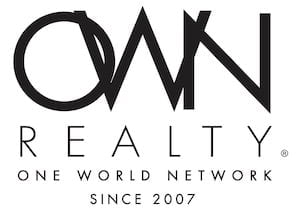1031 Exchange in Pennsylvania
- Home
- 1031 Exchange in Pennsylvania
Considering A Tax Deferred 1031 Exchange in Pennsylvania? We are here to help!
Investment Potential: Understanding 1031 Exchange in Pennsylvania
A 1031 exchange in Pennsylvania, often referred to as a tax-deferred exchange, is a strategic approach offering investors an opportunity to optimize their real estate investments. The process involves selling a qualified property and then acquiring another qualifying property within a specific timeframe.
What sets a “1031 exchange in Pennsylvania” apart from a conventional sale is that the transaction is treated as an exchange rather than a standard sale. This crucial distinction allows taxpayers to qualify for deferred gain treatment, providing the advantage of deferring the payment of capital gains taxes.
Unlike traditional sales that typically incur IRS taxation, a 1031 exchange offers investors a substantial tax-saving opportunity, governed by US CODE: Title 26, §1031, which regulates the exchange of properties held for productive use or investment.

Navigating Financial Strategies: Leveraging a 1031 Exchange in Pennsylvania
Comprehending the tax benefits and fundamental purpose of a 1031 exchange in Pennsylvania is crucial for investors aiming to optimize their real estate investments. The specific tax code governing a successful exchange can be found in Section 1031 of the Internal Revenue Code.
The IRS‘s interpretation, combined with widely accepted standards, regulations, and compliance guidelines, is outlined in the Like-Kind Exchange Regulations issued by the US Department of the Treasury. These comprehensive regulations outline the rules, requirements, and guidelines for executing a qualifying transaction, providing insights into the IRS’s interpretation of Section 1031.
Preserving Capital: The Significance of 1031 Exchanges in Pennsylvania
Every property owner or real estate investor in Pennsylvania should consider a 1031 exchange when planning to acquire a replacement “like-kind” property following the sale of an existing investment. Failing to engage in a 1031 exchange may result in the obligation to pay a capital gains tax, presently set at 15%, with the potential to rise to 20% in the future.
Considering both federal and state tax rates specific to Pennsylvania is essential when executing a 1031 exchange. The primary rationale for pursuing a 1031 exchange lies in the IRS’s depreciation of capital real estate investments, occurring at a rate of 3% per year until the investment is fully depreciated.
Why Consider a 1031 Exchange in Pennsylvania?
Understanding Taxation and Depreciation: Core Aspects of 1031 Exchanges
When you sell a capital asset, the IRS intends to tax you on the depreciated portion as income tax, based on the marginal tax rate. For instance, if you’ve held an investment for 15 years and the IRS has depreciated it by 45%, the agency expects you to pay taxes on that 45% depreciation. Should the combined state and federal taxes reach 35% at the marginal rate, this translates to approximately 15% of the property’s cost (one-third of the 45%).
In a scenario where the property is fully depreciated, the entire 35% marginal tax rate is applicable. Essentially, if you purchase a replacement property without the benefits of a 1031 exchange in Pennsylvania, your buying potential diminishes, representing only about 70-80% of its prior value after accounting for the exchange and tax payment.
The 1031 exchange in Pennsylvania is a recognized and vital IRS strategy for deferring capital gains taxes, emphasizing the essential understanding of this tax-deferred process for property owners and real estate investors. The definitive guidelines crucial for a successful exchange reside within Section 1031 of the Internal Revenue Code.
Furthermore, the elucidation of the IRS’s interpretation, coupled with widely acknowledged standards and compliance directives, are extensively detailed in the Like-Kind Exchange Regulations, a comprehensive publication from the US Department of the Treasury. This thorough resource navigates the intricacies of IRS rules and the requisite guidelines for executing 1031 exchanges, encompassing both legal statutes and the IRS’s application and understanding of Section 1031.
In Pennsylvania, engaging in a 1031 exchange is a strategic maneuver for property owners and real estate investors, pivotal in the deferral of capital gains taxes. This exchange mechanism demands a profound understanding of its intricacies to leverage the benefits it offers. Section 1031 of the Internal Revenue Code is the cornerstone, outlining the regulations essential for a successful exchange, providing the fundamental guidelines vital for compliance.
Delving deeper into this domain, the Like-Kind Exchange Regulations, curated by the US Department of the Treasury, present a comprehensive guide illuminating the IRS’s rules and directives concerning 1031 exchanges. This exhaustive resource serves as a compass, navigating through the legal stipulations and the IRS’s nuanced interpretation of Section 1031.
The landscape of Pennsylvania’s real estate market presents numerous opportunities for investors, and the 1031 exchange in Pennsylvania plays a pivotal role in optimizing investments. The exchange not only defers taxes but also facilitates strategic portfolio enhancement. Recognizing and complying with IRS rules and state-specific regulations within Pennsylvania is paramount.
Through the understanding and application of these regulations, investors can maximize the benefits offered by the 1031 exchange in Pennsylvania. Effectively executing this tax-deferred strategy not only secures financial advantages but also aligns with investors’ long-term financial goals in Pennsylvania’s dynamic real estate arena.

The Significance of a 1031 Exchange:
When considering a 1031 exchange in Pennsylvania, property owners and real estate investors must weigh the decision when planning to acquire a “like-kind” replacement property subsequent to selling an existing investment. Opting out could trigger a capital gains tax, currently at 15% but potentially increasing to 20%. It’s vital to factor in both federal and state tax rates within Pennsylvania when executing a 1031 exchange.
The prime reason for pursuing this exchange is rooted in the IRS’s gradual depreciation of capital real estate investments at a rate of 3% annually until the asset is fully depreciated.
Upon selling the asset, the IRS imposes taxes on the depreciated segment as income tax, subject to the marginal tax rate. For instance, if you’ve held an investment for 15 years and the IRS has depreciated it by 45%, they expect taxes on that depreciated 45%. If state and federal taxes sum up to 35% at the marginal rate, it effectively accounts for about 15% of the property’s cost (one-third of the 45%).
Should the property be entirely depreciated, the complete 35% marginal tax rate applies. Without the advantage of a 1031 exchange, purchasing a replacement property diminishes your buying power, representing only about 70-80% of its prior value post-exchange and tax payment.
In Pennsylvania, a 1031 exchange emerges as a pivotal strategy for real estate investors and property owners seeking to navigate the complexities of tax-deferred transactions. The decision to participate in a 1031 exchange is essential, especially when contemplating the sale of an existing investment property and the acquisition of a like-kind replacement. Opting against this exchange could lead to the imposition of a capital gains tax, a potential financial burden that presently stands at 15% but might escalate to 20% in the future.
To execute a successful 1031 exchange, understanding the implications of both federal and state tax rates within Pennsylvania becomes imperative. The fundamental premise underpinning the pursuit of a 1031 exchange is rooted in the IRS’s gradual depreciation of capital real estate investments at a rate of 3% annually until the asset reaches full depreciation.
For investors and property owners in Pennsylvania, the financial implications of a 1031 exchange extend beyond mere tax deferral. The IRS’s taxation model upon selling an asset reflects a taxing system that considers the depreciated segment as income tax at the marginal rate. Notably, the longer an investment is held, the more it depreciates, leading to potential tax liabilities.
To maximize financial returns and retain purchasing power, engaging in a 1031 exchange remains a strategic option. Without leveraging this tax-deferred transaction, the acquisition of a replacement property under the typical tax model could significantly reduce the purchasing potential to only about 70-80% of its previous value after accounting for the exchange and tax payment in Pennsylvania.
Discover Your Path to Wealth Preservation
Unlock the Power of 1031 Exchanges
Are you ready to embark on a financial journey that could reshape your real estate investments? Look no further! At Sapphire Investment Solutions, we specialize in turning the complex world of 1031 exchanges into a streamlined, wealth-building opportunity.


 Call us today:
Call us today: